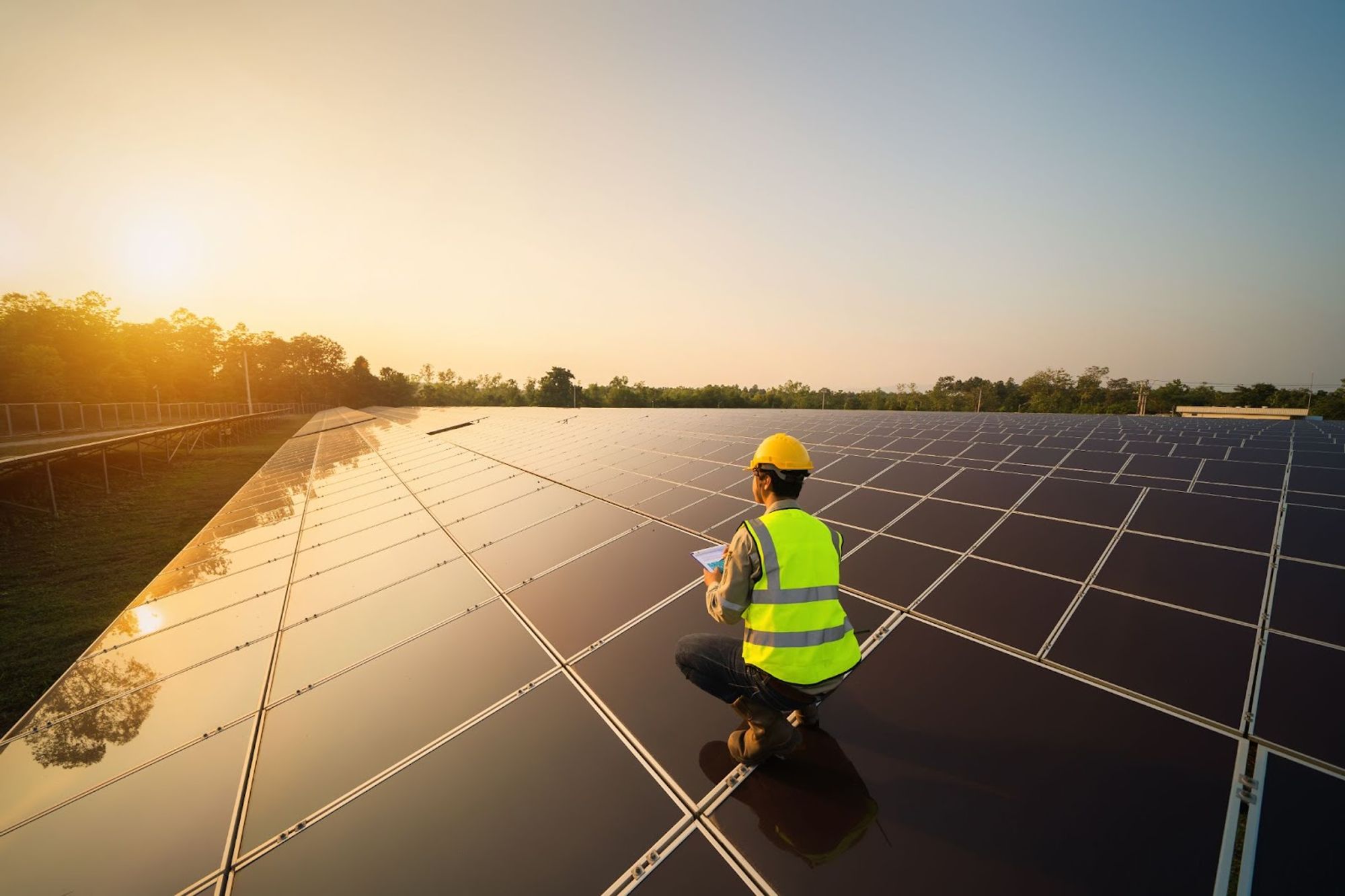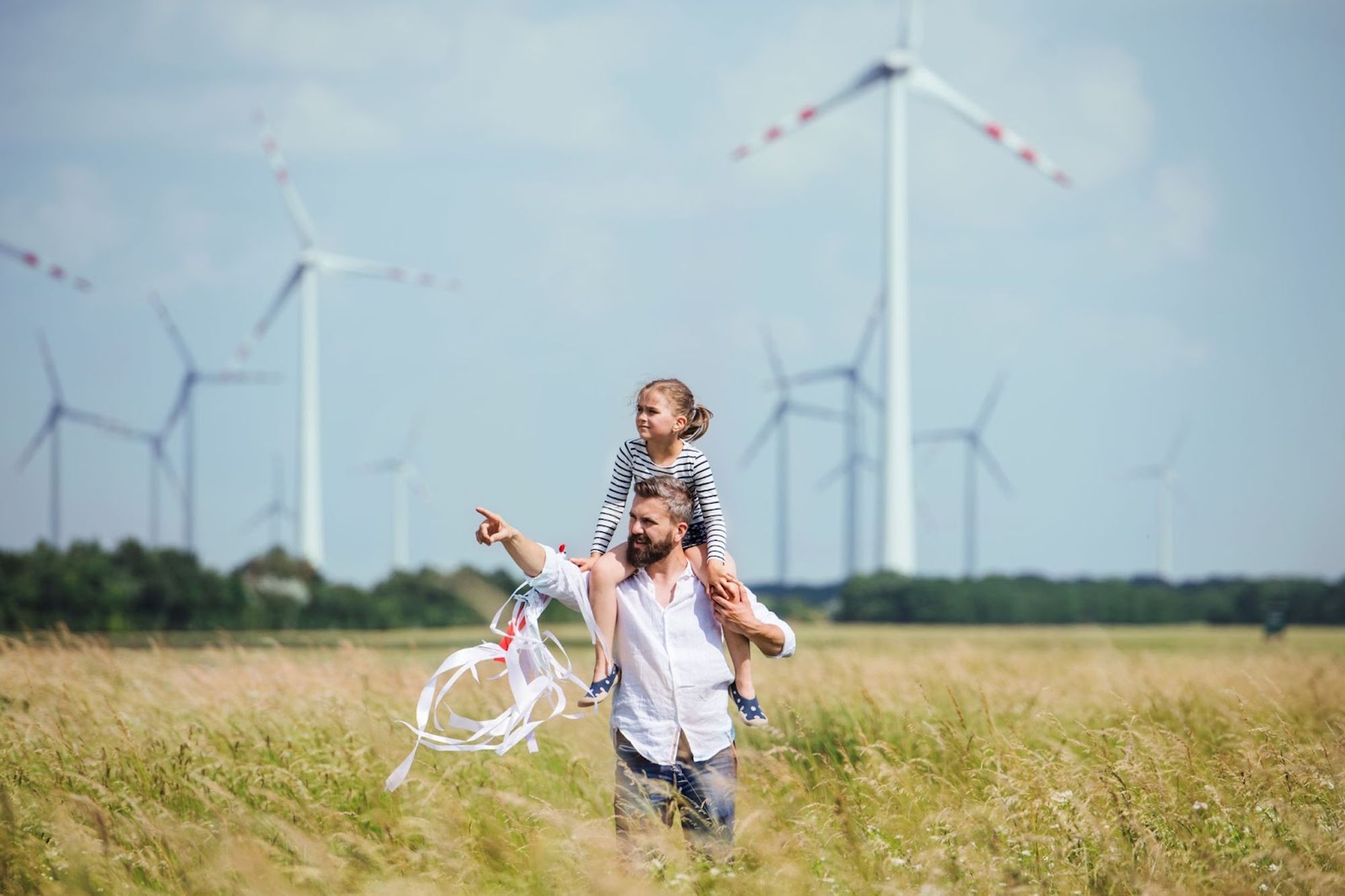The Competitive Advantage of Sustainable Business Models
March 29, 2022
The Competitive Advantage of Sustainable Business Models
Sustainable business models consider the impact business activities have on ecosystems and on society and how to minimize or completely offset them.

Three in four Gen Zers are willing to pay higher prices for sustainable products. And three in four Millennials consider companies' environmental and social policies before deciding where to work or on which brands' products and services they should spend their income. These demographics will soon be the most economically powerful in the world.
Sustainability practices and social responsibility should be hard-coded into the DNA of all companies and become an intrinsic part of their value propositions.
Starting the shift now towards a sustainable new business model will help give your company’s future leaders a better chance of succeeding.
In this article, we examine what a business model is, how it can address sustainability issues, how and why you should implement a business model.
What Does a Traditional Business Model Include?
In its simplest definition, a business model is a blueprint or roadmap on its financial performance — how a company makes a profit.
Contained within a traditional Osterwalder business model framework are the following:
- The products and services that are sold to customers
- The value creation process (for example, the manipulation of raw materials in production to add extra features, functionality, and so on)
- The key stakeholders needed to run the business (staff and suppliers)
Standard business models like these focus solely on the interests of the shareholders. Traditionally, little or no consideration is given to externalities generated by the activities of business like:
- Greenhouse gas emissions leading to climate change
- Environmental impacts like soil and water pollution
- Social issues like human rights, fair market prices for primary sector partners, and living wages for everyone involved in the supply chain
Companies have begun to move away from commitment-light corporate social responsibility programs and replacing them with an ESG approach. This focuses on strategies that consider the environmental and social impacts of a business, as well as how to limit corruption and ethically wield influence (governance).
A Fundamental Shift to an ESG-based Approach
Sustainability strategies and business practices form the foundation of ESG policies. Let’s focus on the environmental and sustainability sides of the ESG approach.
An ESG-centered approach considers how environmental issues relate to every part of the business, from responsible sourcing of raw materials to last-mile delivery to customers’ homes and retailers’ outlets.
Social value is also a central feature of ESG policies. You need to ensure that every person involved in the supply chain is fairly rewarded so that the communities they live in have a chance of thriving now and in the future.
To examine how environmental and social issues can impact business strategy, it’s important to understand exactly what sustainability is first.
How Is Sustainability Defined?

In their paper, "Business Models for Sustainability: Origins, Present Research, and Future Avenues," published on DOI, Stefan Schaltegger, Erik G. Hansen, and Florian Lüdeke-Freund created the most widely accepted definition of what a sustainable business model (SBM) is.
Sustainable business models create economic value just like standard business models do. However, they do so in a way without making it more difficult for future generations to achieve the same results.
To do this, companies need to create a sustainable value proposition (SVP). An SVP still allows companies to make profits and generate returns for their shareholders. But now they also consider the social, environmental, and economic costs of their actions and mitigate them.
How could someone present a business case to a farmer using pesticides to switch to an alternative?
If the farmer wanted to pass the farm onto their children, the starting point for persuading them might be to show them how pesticides negatively affects soil quality, decreases biodiversity, and impacts on human health including their children’s health.
While the farmer’s yield may be negatively affected by the change over the short term, they are ensuring the health of the soil and the wider environment over the longer term.
What Does a Sustainable Business Model Consider?

Sustainable business models require businesses to consider the impact their activities have on ecosystems and on society and how to minimize or completely offset them.
Environmental Considerations
The environment's ability to "proactively adapt to and recover from disturbances" is insufficient when we consider climate change. We see that with daily news reports on rising temperatures, melting polar ice caps, the productivity of agricultural land, the effects on human health, biodiversity, and so on.
Whereas traditional business models only capture value by measuring a company's financial inputs and outputs, they don't consider the associated externalities to a business's output.
By focusing on environmental sustainability in your business operations, the significance of those externalities can be greatly reduced.
For example, if a furniture manufacturer switched from sourcing wood from virgin forests on the other side of the world to wood from a local renewable supplier who planted one new tree for every tree sawn down, the impact on the environment would be much smaller.
Mobile phone cover designer and retailer Pela is a great example of a company seeking to reduce pollution and waste from its manufacturing process. They created the world's first completely compostable phone case and reduced their overall waste production by 80%. They also offset all of their carbon emissions in 2019 and are continually finding new ways to reduce actual CO2 output.
To reduce environmental impacts, many businesses now take part in the circular economy. This means that as well as trying to get the maximum life possible out of assets they use through repair, reuse, and maintenance, they also share and lease them with other companies. Although cost savings are reduced by the need for ongoing maintenance, it means that perfectly serviceable and functional equipment does not end up being scrapped at the end of typical 3-5 equipment leases.
Socioeconomic Considerations
In a sustainable business model, there are two socio-economic factors to consider — your own employees and the employees working in your supply chain.
Companies like Two Dudes Painting Company in Pennsylvania support the social movement for a $15 per hour minimum wage across the United States. As well as almost guaranteeing press coverage, measures like this appeal to consumers who appreciate and actively choose businesses that commit to improved working conditions.
Fair Trade is perhaps the best-known international initiative campaigning for socio-economic equity for traditionally poor and subsistence overseas raw materials suppliers like coffee growers.
In this scheme, coffee farmers sell their produce at no less than a "Fair Trade" price — a price agreed between traders, workers, and farmers. When the market price is higher than the Fair Trade price, buyers must purchase at market price.
They also receive a "Fair Trade" premium which must be spent on economic, environmental, and social development projects to benefit their communities and businesses.
In a case study, Fair Trade certification for one chain of coffee shops led to improvements in the quality of the products from the farmers with whom they'd struck up a long-lasting partnership. A large proportion of consumers, particularly Millennials and Gen Zers, actively choose businesses with CSR programs like this even if they pay a higher price.
The Triple Bottom Line: Your Sustainability Report
The bottom line is no longer just about profits but about your value chain. The new triple bottom line, coined by business writer John Elkington, is "people, planet, and profit".
Sustainably minded businesses will find disclosures on environmental and socio-economic sustainability performance will become as much a part of the annual business routine as filing annual taxes.
But, to become a truly sustainable business, you have to apply a process of innovation from the very beginning of the supply chain.
3 Steps to Strategic Sustainability

Sustainable innovation should be central to your company culture. Start the discussion with new colleagues about it during onboarding. Existing staff will also need training and education on the long-term benefits of sustainability.
In all organizations, culture change must always start at the top.
At C-Suite level, product development decision-making should balance profitability and sustainability. This often means giving new or relaunched products or services more time to make money. Sustainability is not a short-term target.
You may also need to insist that suppliers hit certain sustainability targets to be considered for future orders. Try using third-party sustainability audits to ensure you meet targets like net zero emissions.
What else should feature in any sustainable business model innovation framework?
1. Find Creative Ways to Reuse
Fat and grease waste disposal firms and junk dealers are historic examples of circular economy companies - they find value and prolong utility in that which others consider waste.
If your product packaging could be reused (like drink containers), consider partnering with retailers to run a deposit return scheme. For companies in the food sector, maybe send unsold produce to charities or out-of-date produce ffor composting.
For inspiration, many brewing by-products have been repurposed by Unilever as a popular sandwich spread, Marmite (or Vegemite).
2. Use Sustainable Materials
Could you replace some of the raw materials used in your manufacturing and production practices to reduce greenhouse gas emissions, reduce environmental pollution, and reuse what others see no value in?
For example, by 2025, all Lego packaging will be made from recycled or renewable materials. By 2030, all of their core products will be made using sustainable materials. And "Lego Replay" attempts to create a circular product by asking existing customers to donate their old sets for continued use.
Architects and construction companies can change the materials used in the building of homes and offices to more sustainable materials. They could bake in heating, ventilation, and cooling system efficiency into properties and, where the budget exists, install solar panels, wind turbines, and heat pumps.
Dutch operator Fairphone's range of handsets are made from recycled materials and materials from miners that belong to the Alliance for Responsible Mining.
3. Improve Operating Procedures
Companies can choose green logistics alternatives to get their products to end-users. Likewise, where the alternative exists, companies can reduce transport-related greenhouse gas emissions and support their local economies by buying local. Contact your utility supplier to make sure you only use carbon-neutral renewable energy in your factories and offices.
Efficiencies can be driven through in the production process reducing the amount of energy it takes to manufacture each unit. With higher quality controls, the number of faulty or defective units can be reduced, minimizing waste and improving capacity.
Marketing and sales teams can get involved too. The number of returns made to online retailers is a much higher rate than to bricks and mortar retailers. While there is a healthy liquidated product industry in many countries of the world, its existence is a major consumer of energy and generator of landfill waste. By providing the most detailed and accurate descriptions of your products, you may significantly reduce pollution generated by returns as well as the level of workload on your staff.
How Innoveto Can Support Your Sustainability Initiatives
Sustainability is just one of the issues facing businesses requiring an innovative approach. The advance of technology and changing regulation requires us to think in different ways about how we develop our businesses.
However, the current climate offers the opportunity to operate more sustainably while appealing to customer sensibilities and increasing competitiveness.
Innoveto’s ESG sprint team works with business leaders and entrepreneurs to help them prepare their companies to meet the challenges and opportunities in developing and implementing world-class environmental, social, and governance policies.
Our ESG sprint takes place over five days and features the following:
- Discover. Gain a greater understanding of climate change and how it relates to your company, investors, and customers.
- Define. Clearly see the risks presented by climate change and the competitive opportunities offered by meeting the challenges with ambition and purpose.
- Develop. Create a vision for how you wish to operate as a business in the future, understanding the key metrics you need to prioritize.
- Deliver. Develop a business model based on sustainable development which is competitive and profitable. Together, we’ll also build an ESG strategy plan.
- Next steps. Develop action and communication plans and secure internal and external stakeholder commitment.
To find out more about Innoveto’s ESG Sprint, please call +41 43 205 21 73, email hello@innoveto.com, or click here for our contact form.
What are we waiting for?
There are many reasons to speak to us. Maybe you would like to talk to someone about your newest project? Or do you have questions about innovation topics and our formats? We're always willing to listen and looking forward to meeting you. Here you can schedule an appointment online.